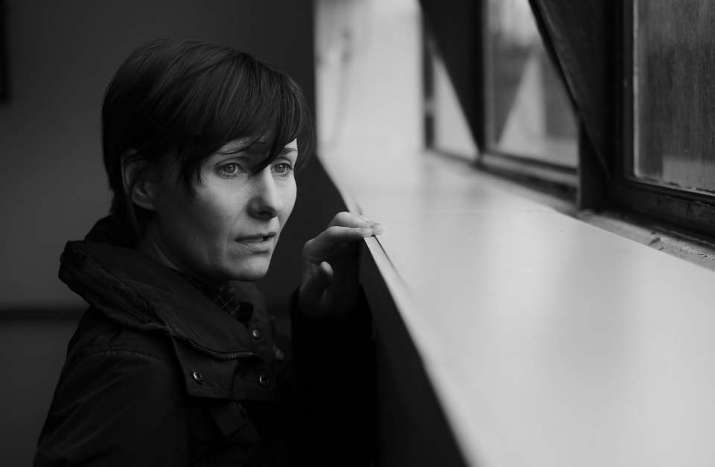
In grief, there is dukkha. The most obvious reason for this is that we want whatever it is that we have lost to come back to us, or we wish never to have experienced the loss at all, or we do not want to feel all of the complex emotions that for many of us are part of grieving. We become attached to either wanting good things to stay the same or for difficult things to stop being difficult: I want this, and I do not want that.
There it is, clinging and aversion. If this is not true for you, then now is a great time to stop reading. Or perhaps continue and gain an understanding of what other people around you are experiencing every day.
When someone you love dies, the most apparent form of attachment is your attachment to your relationship. Now your mother, father, partner, or friend has gone. He or she is not coming down the hall to have breakfast with you. You are not going on vacation together. He or she will not make you dinner, do the dishes, or take out the trash. You will have times when you forget this, and you will look for him or her when you come into the room. Or you will try to send a text. Or you will think, “Oh, I need to tell Mom about . . .” And then you will remember, “Oh, that’s right. Mom is dead.” And it will hurt. It will hurt less as you remind yourself about clinging and attachment and impermanence. It will hurt less when you accept the situation for what it is and learn how to live your life as it is now.
There are other forms of clinging and aversion that might be part of your journey. Sometimes they are so subtle that you do not recognize them, while other times, it just smacks you in the face. What are some of these forms?
Things
A few days after my father died, my mother went to his closet and pulled out his clothing. She was distraught and could not stand to look at his things. At the time, I was shocked. On some level, I recognized that she was having an emotional reaction to his death, and seeing his clothing was triggering. A few weeks later, as she was walking down the hallway, she had a similar episode. She insisted that his computer desk needed to be taken apart and moved into the garage right away. Fortunately, I was able to comply. She had an aversion to seeing the things he used daily because he was no longer here, using those things. And seeing his jacket in the closet or his empty desk was breaking her heart.
My aunt kept her husband’s clothing precisely as it was for over a year. His closet was ready and waiting for his return. Nobody was allowed to touch anything. In this state, her new husband moved in and found a way to make room for his things.
You might find yourself in one of the above scenarios. Or you might find yourself letting things go in phases. I know I have felt this happen to me. There were some items that I released right away. As I write this, I can visualize some of the things I still have.
There is a lesson in what you keep and what you release. What do you cling to and why? What do you get rid of and why? I had no problem selling my husband’s gold watch. I never liked that watch. The circumstances under which he received the watch were somewhat sketchy. He knew that, but he loved the look of it. Now, years later, I still have his favorite old tank top. I am never going to wear it. I do not take it out and look at it. But I can tell you exactly where it is.

Roles
In the selfing that you do, and in your clinging to the ego, you create roles for yourself. Your version and vision of who you are. The part that you have selected for yourself may or may not support you. How do you know? By watching yourself. Sit with your beliefs about who you are and how your behaviors bring you to ease or bring you discomfort. If, during this time, you cling to your role as the strong one, or the emotional one, or the drama queen, or the energy vampire, you are binding yourself to suffer from a fetter. The more that you hang on to your role, the more you think, “I am strong, I should be able to handle this,” or “I should be recovering faster,” or “I should not feel sad anymore.” All of these thoughts are just adding to your suffering.
Emotions
To live with grief is to live with an ever-changing cornucopia of emotions. Happy, sad, fearful, hopeful, and so much more. Not only is each day different, but sometimes each moment is too. There is good news. Whatever you are feeling is OK. You are not your feelings, and your feelings will change. Feel the difficult emotions. Sit with them. Watch them rise, notice how and where you feel them, and watch them cease.
You are not required to hang onto any of it. You do not have to tell people that everything is great when it is not great. You also do not have to tell everyone that things are terrible if they are not terrible. There is no required time limit on any of your emotions. If you find yourself pushing away the problematic emotions, pay attention to your aversion. What is behind not wanting to recognize your pain?
Surroundings
After my husband died, I remember people just assuming that I would move. And at first, I assumed that I would move too. It was not because I wanted to move, but because, for a brief time, I thought I should move. Now, I see this as one of how different types of clinging and aversion come together. My role as a partner had changed. People around me thought I should not be alone in this space. Some of those people had their aversion to having to see me in a place that used to belong to us. When sitting with it and investigating what came up for me, I realized that I was perfectly happy staying in my current space. I was not walking around the house creating memorials or seeing my dead husband in every corner. I was happy and secure. Others hate staying behind in a space that they shared with a loved one. Whether you stay or go, pay attention to your clinging and aversion. The truth is that whatever decision you make might be triggered by your attachment. And the first step toward working with it is recognition.

There are so many lessons for you in what you hang on to and what you push away. These are not simply lessons about our relationship with our loved ones. They are lessons about our relationship with ourselves and with life itself. The Alagaddupama Sutta is a teaching that can be useful in showing us how to be skillful with our attachments.
“Suppose a man were traveling along a path. He would see a great expanse of water, with the near shore dubious and risky, the further shore secure and free from risk, but with neither a ferryboat nor a bridge going from this shore to the other. The thought would occur to him, ‘Here is this great expanse of water, with the near shore dubious and risky, the further shore secure and free from risk, but with neither a ferryboat nor a bridge going from this shore to the other. What if I were to gather grass, twigs, branches, and leaves and, having bound them together to make a raft, were to cross over to safety on the other shore in dependence on the raft, making an effort with my hands and feet?’ Then the man, having gathered grass, twigs, branches, and leaves, having bound them together to make a raft, would cross over to safety on the other shore in dependence on the raft, making an effort with his hands and feet. Having crossed over to the further shore, he might think, ‘How useful this raft has been to me! For it was in dependence on this raft that, making an effort with my hands and feet, I have crossed over to safety on the further shore. Why don’t I, having hoisted it on my head or carrying it on my back, go wherever I like?’ What do you think, monks: Would the man, in doing that, be doing what should be done with the raft?’
“’No, lord.’
“And what should the man do in order to be doing what should be done with the raft? There is the case where the man, having crossed over, would think, ‘How useful this raft has been to me! For it was in dependence on this raft that, making an effort with my hands and feet, I have crossed over to safety on the further shore. Why don’t I, having dragged it on dry land or sinking it in the water, go wherever I like?’ In doing this, he would be doing what should be done with the raft.” – MN 22
There will be things, emotions, surroundings, and more that will be part of your grief journey. Some of these you will want to gather up and use to create your raft. And that raft will be an essential part of your trip. Conversely, the day will also come when you realize that those things, emotions, or surroundings slow you down. It is time to let go of your raft.
See more
Margaret Meloni: Death Dhamma
The Death Dhamma Podcast (Margaret Meloni)












